Intelligent, bold and found almost everywhere in the UK, members of the crow family – known as corvids, can be seen on almost any countryside walk. But how well do you know these large and characterful bird species? Can you tell your carrion crow from your rook?
Crow species are intelligent birds that can adapt to a range of habitats, nesting sites and food items – with the exception of the more specialised chough.
While many typical farmland species such as turtle doves, corn buntings and yellowhammers have struggled with the intensification of farming practices over the past 70 years and declined as their ecological niches have shrunk, crows are more opportunistic and versatile and find ways of living alongside us humans. The crow family’s success at a time when other birds have disappeared has led many people to blame the crows rather than look at complex environmental issues.
Learn more about British crows – where they live, how to identify them and some of the controversies surrounding some of the species in our expert guide.
Find out more about British birds with our bird guides on blackbirds, robins, tits, finches and owls.
What is a group of crows called?
Many bird species have interesting collective nouns, and crows are no exception. A group of crows is, somewhat sinisterly, called a murder. It is thought to date back to the Middle Ages and Medieval hunting as crows are natural scavengers that will feast on the remains of animals, and have historically be found hunting battlefields leading the species further association with death.
What do crows eat?
Natural scavengers, crows are incredibly adaptable and eat a variety of nuts, seeds, fruits, insects and small mammals. However, they will eat whatever is on offer so don't be surprised to see a crow feasting on the remains of a takeaway or other food waste.
British crow species
Carrion crow (Corvus corone)
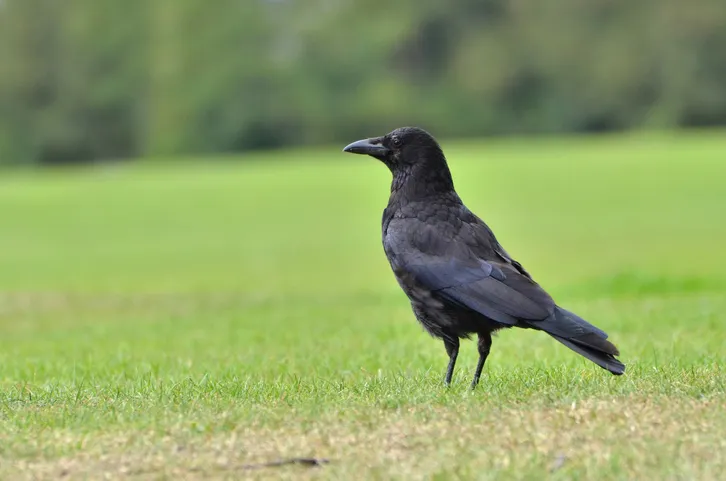
An intelligent, adaptable bird that has thrived on the changes humans have made to the landscape. Omnivorous, it will eat anything from kitchen scraps to dead animals (hence the name) and from fruit to worms, small mammals and birds. The crow is black all over, though in sunlight petrol-like blues and purples can be seen on the wing and nape feathers. Unlike the rook, the crow’s beak is black or grey. As many as one million pairs of carrion crows live in the UK – though they are largely solitary and wary birds. The lonely ‘caw’ cry is often the only birdsong on autumn and winter lowlands. Carrion crows were heavily persecuted in the past and are still controlled today on shooting estates and in some conservation areas to prevent predation of rare or more commercially valuable species.
Jackdaw (Corvus monedula)

Noisy and gregarious, this small crow is best distinguished by its lively aerobatics accompanied by a high-pitched cry – the ‘tchack’ from which it takes its name. Up close, the jackdaw is easy to distinguish by its grey head and startling pale blue eyes. Jackdaws can be common in gardens and parks on the edge of town and they love to nest in chimney pots, old buildings and ruins that provide plenty of ledges and holes where they can nest in loose colonies. Like the crow, it is omnivorous and common raids bird tables. It is agile enough to cling to some mesh bird feeders too. In winter, large numbers may gather for noisy dusk roosts, performing agile sky dances before settling in groups of tall trees.
Rook (Corvus frugilegus)

A sociable bird, the rook is the most common crow found on farmland and its busy nesting colonies can be seen from late January onwards. The rook has a shaggier, more unkempt appearance than the common crow and its white bill is longer and more pointed. It uses this for probing in meadows for worms and insect larvae, particularly leatherjackets (the larval stage of craneflies) though it will take any small mammals, nestling and eggs that it comes across, as well as fruit and grain. Rooks are highly sociable throughout the year, nesting in colonies, feeding in groups and, in winter, flocking together in groups of hundreds, sometimes thousands of birds. Rook pie – made from the fledgling youngsters – was once a rural staple across Britain.
Jay (Garrulus glandarius)
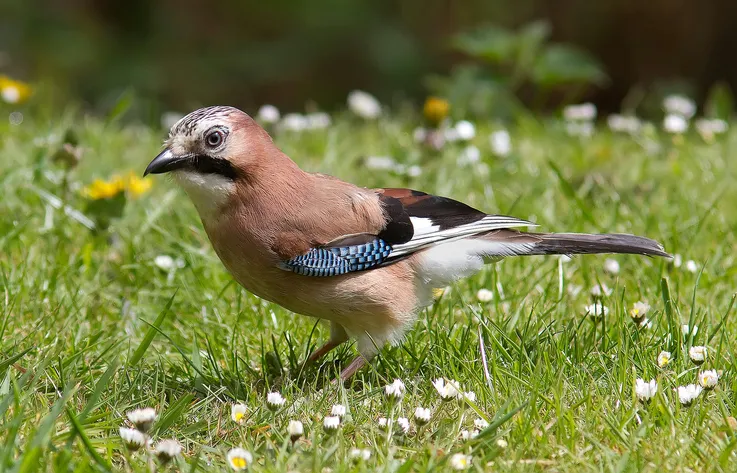
Despite its pinkish plumage and dazzling blue wing flashes, the jay is a shy bird of woodlands where its harsh, screaming call may be the only sign of its presence. It has shorter wings than its cousins for manoeuvring among the trees and on the wing it shows white wing flashes as it flits on staccato wingbeats between areas of cover. The jay does visit gardens and bird tables but is best known for its habit of storing acorns. It may bury many hundreds each autumn and will remember enough of their locations to ensure a steady food supply until spring. However, like its cousins, it is opportunistic and will eat any tasty morsel it finds.
Jay guide: how to identify, behaviour and where to see in Britain
Magpie (Pica pica)
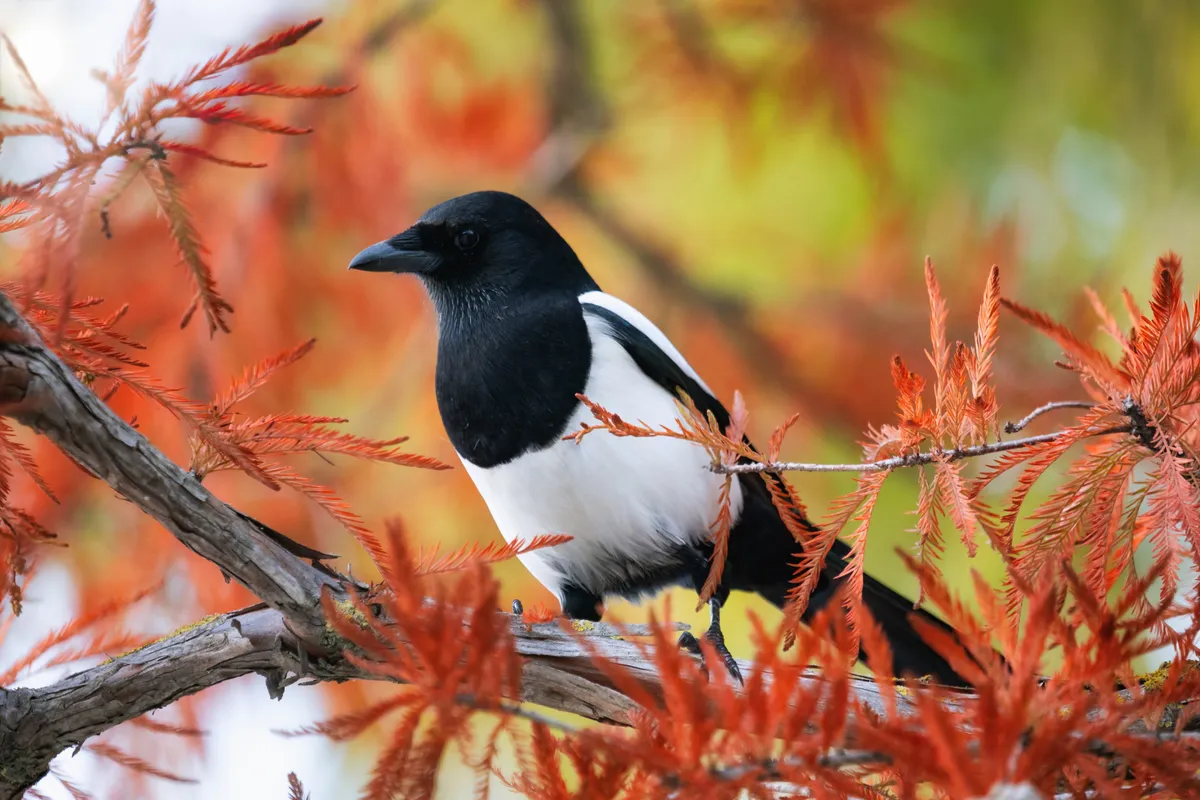
The most distinctive member of the crow family, with its long tail and black and white plumage and green gloss on its tail. The magpie is a bold, clever, jaunty bird that makes its home in gardens, parks, hedgerows and farmland and its chattering call is harsh and sometimes grating, especially when large family groups are foraging in late summer. Another omnivore, it will regularly come to birdtables but will also seek bird nests for eggs and fledglings and it has unfairly earned itself the blame for declines of some songbird species. Magpies are the source of numerous songs and folk stories.
Raven (Corvus corax)
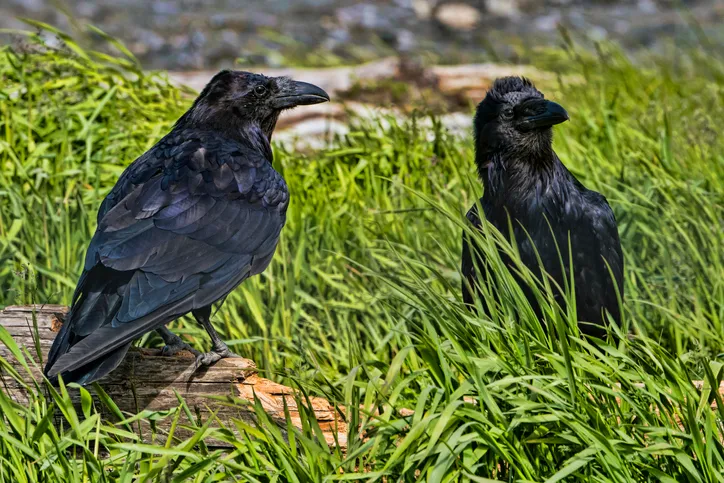
The largest and most massive of our crows, the raven rivals the buzzard in size and aerobatics. Until recently, it was an upland bird of craggy hills and wild moors but it has expanded its range eastwards across Britain and can be found in lowlands so long at there are woods with tall trees for its large nest. Black all over but with a metallic sheen in sunlight, the raven has a huge black bill. It will eat carrion, seeds and invertebrates but also catches larger prey such as rabbits and pheasants. In sheep-farming areas, it is sometimes blamed for killing lambs and has been heavily persecuted in the past. Not as solitary as the crow, ravens can be found in family groups of half a dozen noisy birds. The raven’s voice is a resonant croak that seems appropriate for the wild places it inhabits.
Chough

The coastal crow – a little smaller than the carrion crow and rook – and more delicate with red feet and a bright red, downward curved bill. Choughs nest on cliffs and use their specially adapted bills to forage in sheep fields and clifftop grassland for invertebrates. Found mostly in the rugged coasts of Cornwall and south and west Wales, chough numbers are increasingly slowly and the species is spreading. In flight, it is easily confused with the equally nimble jackdaw but its ‘chee-ow’ call, from which it takes its name, it a giveaway.
Hooded crow (Corvus cornix)
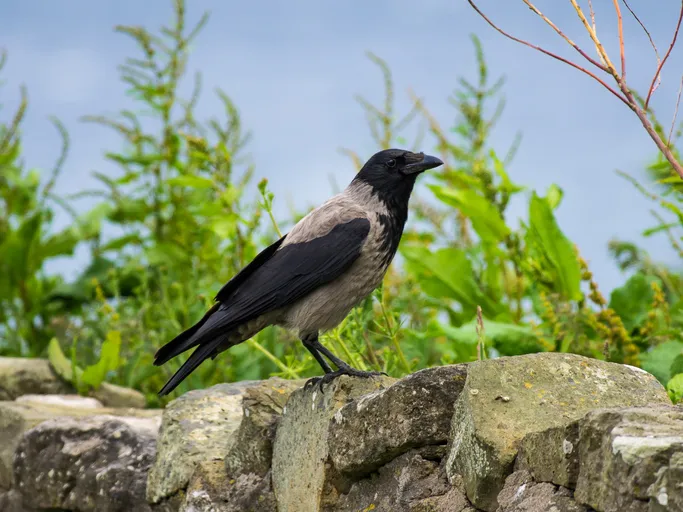
Closely related to the carrion crow but now thought to be a separate species, it is found in Ireland and western and northern parts of Scotland, where it largely replaces the carrion crow. Though both species have similar diets and behaviour, the ‘hoodie’ is more sociable when feeding and is more often seen in groups. But it is in looks that the two species really diverge – the hoodie has a battleship grey body with black head, wings and tail.
What’s the difference between a rook and a crow?
There’s an old saying “a crow in a crowd is a rook and a rook on its own is a crow” and this holds true for the most part. Carrion crows are largely solitary while rooks are sociable and nest communally. They also look quite different – in flight the rooks have splayed wingtips while the carrion crow has solid, rounded wingtips. The rook has a grey-white bill while the carrion crow’s beak is black and looks stouter.
Are magpies to blame for the decline in songbirds?
Magpies will eat the eggs and nests of other species and this can be distressing for us when we see it happening. However, magpie’s are not to blame for the wider declines of species such as song thrushes, sparrows, starlings and others, whose plight is linked to a number of factors including loss of nesting habitats and the well-reported decline of insects that they rely on, especially to feed chicks in the nest. The magpie’s visibility and apparently bullying behaviour make it an easy target. But it is one of Britain’s most strikingly beautiful birds and has its place in our gardens and countryside.

